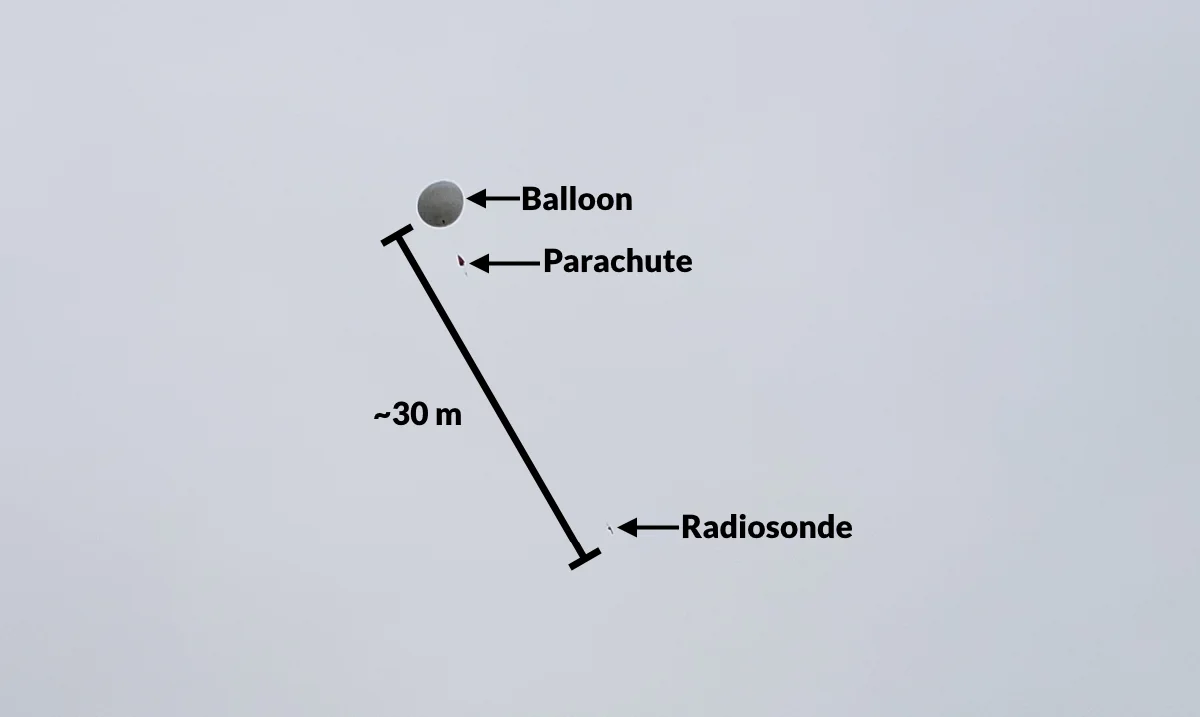
How a simple weather balloon helps improve your daily forecast
Weather balloons are a simple solution to a complicated problem.
Weather balloons are the butt of jokes when there’s anything flying around that we can’t identify. Strange light over the city? Curious object behind the clouds? Ahh, it’s just a weather balloon.
Beyond their punchline status, though, weather balloons play a surprising role in your everyday life. These ubiquitous tools are indispensable in weather forecasting—we’d be lost in the clouds without them.
DON’T MISS: Six annoying ways weather forces airlines to cancel your flight
We have a pretty solid network of observation stations here on the ground. It’s tough to miss the current temperature at your house, out on the deck, or even in front of the bank down the street.
But knowing what the weather is like here on the ground is only a tiny fraction of the story.
Meteorologists need a full picture of what the weather looks like now so they can predict what it may do in the days to come. This includes conditions thousands of metres above our heads, stretching all the way to the top of the atmosphere.
That’s where a weather balloon comes in handy. Weather balloons are essentially atmospheric biopsies.

A weather balloon carries a parachute and a radiosonde on a cord measuring about 30 m long. The parachute prevents the instruments from hurting anyone when the balloon pops and falls down. (NWS New York)
Technicians (usually meteorologists themselves!) hang a box full of instruments known as a radiosonde to the bottom of a large balloon. They fill these balloons with helium or hydrogen and release them at set times throughout the day.
Thousands of weather balloons launch around the world every day, amounting to more than 100,000 annual launches right here in North America alone. Information collected by those radiosondes is vital to our understanding of the atmosphere.
READ MORE: Jet streams can bring Canada wild winters and steamy summers
These instruments collect temperature, moisture, and air pressure measurements from the surface to the tropopause and beyond—far higher than commercial jets fly. Radiosondes even use GPS data to measure the speed and direction of the balloon's movement, allowing meteorologists to calculate which way and how fast the wind is blowing.
This information gives us a complete picture of the weather through an entire slice of the atmosphere, providing an invaluable look at features like upper-level troughs, ridges, and jet streams.
WATCH: Epic journey: We attached cameras to a weather balloon
Temperature and moisture data can help meteorologists assess whether a winter storm will produce rain, snow, freezing rain, or ice pellets. The same information is also useful for analyzing the amount of instability and wind shear over a particular spot, giving nearby towns critical lead time ahead of severe thunderstorm and tornado outbreaks.
Collectively, all of these routine weather balloon launches around the world fit together like a puzzle, giving us a clear picture of what the weather is doing at every level of the atmosphere.
All of this information gets fed into weather models to improve their own understanding of the current state of the atmosphere, allowing them to produce clearer guidance for meteorologists to create more accurate forecasts.
They’re so helpful that meteorologists will launch even more balloons ahead of highly impactful systems like hurricanes, giving computer models an extra leg up on predicting these dangerous storms.
Thumbnail courtesy of Kyle Brittain.











